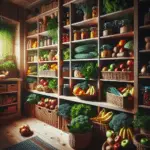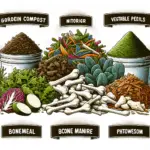Are succulents toxic to dogs? As pet owners, we want to ensure our furry friends are safe from harm. While succulents add beauty to any space, some can be harmful to dogs. This post explores the dangers, symptoms, and safe plant options. Understanding these aspects can help maintain a pet-friendly home without sacrificing your love for these delightful plants.
Which Succulent Varieties Are Toxic to Dogs?
Certain succulent varieties pose a significant health risk to dogs, making it crucial for pet owners to identify which types are toxic. Kalanchoe species, for example, are harmful and can cause vomiting and heart arrhythmias in dogs. Euphorbia succulents are another group that should be avoided. These plants contain a white, milky sap that is highly irritating to dogs, leading to symptoms like drooling and digestive upset.
The Aloe Vera plant, though beneficial for humans, is not safe for dogs. Ingesting this succulent can result in lethargy and diarrhea. Furthermore, protective measures should also be taken with the Jade plant; dogs who chew on this plant may experience neurological symptoms including incoordination and depression.
Bringing awareness to these toxic succulents helps prevent accidental poisoning. Pet owners should exercise caution when selecting succulents for their homes or gardens, opting for safe, non-toxic varieties wherever possible. Educating oneself on these dangerous plants can vastly reduce health risks for canine companions.
Common Succulents That Are Safe for Pets
Pet owners often worry about the plants in their home, especially if they own succulents. It’s essential to know which succulents are safe for your pets to avoid any accidental ingestion that could lead to health issues.
Spider Plant (Chlorophytum comosum): Known for its air-purifying qualities, the spider plant is both attractive and safe for pets. Its long, arching leaves make it a favorite among plant enthusiasts.
Haworthia: This succulent is similar in appearance to Aloe Vera but is completely non-toxic to dogs. It’s an excellent choice for pet-friendly households.
Echeveria: Widely popular for their beautiful rosette shapes, Echeverias are non-toxic and safe for homes with pets. They come in different colors, adding aesthetic value while being harmless.
Bamboo Palm (Chamaedorea seifrizii): Not exactly a succulent, but often included for its hardy nature and pet-friendliness, the bamboo palm is safe for dogs and can thrive indoors.
Pet-Friendly Choices
When choosing succulents, it’s crucial to consider your pet’s safety. Stick to varieties known for being non-toxic, and always monitor your pet’s interaction with plants. Many beautiful succulents can coexist peacefully with pets, ensuring your home remains a safe and serene space.
Symptoms of Succulent Poisoning in Dogs
It’s essential for pet owners to recognize the symptoms of succulent poisoning in dogs to act promptly. If your dog ingests toxic succulents, they may exhibit vomiting, diarrhea, and excessive salivation. These initial symptoms are often mild but can escalate if not addressed. Watch for signs such as lethargy and a noticeable lack of appetite, which can indicate a more severe reaction.
In some cases, your dog might experience abdominal pain or show increased respiratory distress. More serious symptoms can include tremors or weakness, suggesting the toxin has affected their nervous system. If these symptoms persist or worsen, it’s crucial to seek veterinary care immediately.
Understanding these symptoms helps in identifying a potential issue promptly and ensuring the safety of your pet. Awareness and education about toxic succulents are vital for preventing accidental poisoning. Monitoring your canine’s behavior and physical symptoms after suspected exposure aids in quick intervention.
How to Identify Toxic Succulents in Your Home or Garden
Recognizing toxic succulents is vital for pet owners to protect their dogs. To identify which succulents in your home or garden may pose a risk, examine the plant’s features and consult reliable sources. Start by researching common toxic varieties such as pencil cactus and jade plant. These succulents often have specific characteristics like milky sap or distinct leaf shapes.
Pay close attention to plants with unusual markings or colors, as these can sometimes indicate toxicity. Examine your garden for any species that produce sap. Sap can be sticky or milky, often a common indicator of potential harm if ingested by pets. Additionally, understanding that not all succulents are pet-friendly is crucial; some popular choices might still be unsafe.
Constant vigilance and knowledge are essential. Reference botanical guides or online databases to confirm the safety of your specific succulents. A responsible approach involves separating toxic varieties from pet-accessible areas, ensuring a safe environment for your dog to explore and enjoy.
Stay informed by keeping a list of toxic and non-toxic plants, focusing on the visual cues that signal danger. Regularly inspect your plant collection and educate family members about the types of succulents in your home. This preventative measure helps create a safer living space for both pets and people.
What to Do If Your Dog Eats a Toxic Succulent
Immediate Steps You Should Take
If you suspect that your dog has eaten a toxic succulent, act quickly to prevent any potential harm. Start by removing any plant remnants from your dog’s mouth to avoid further ingestion. Make sure to keep the remaining succulent out of reach.
Contact a Veterinarian
Call your veterinarian or an emergency animal clinic as soon as possible. Provide them with details about the specific type of succulent your dog ingested, as well as any symptoms your pet is displaying.
Watch for Symptoms
Observe your dog closely for symptoms like vomiting, lethargy, diarrhea, or drooling. Reporting these symptoms to your veterinarian can be crucial for timely and effective treatment.
Don’t Induce Vomiting Without Guidance
Never induce vomiting unless expressly instructed by a vet. Doing so without professional guidance can sometimes worsen the situation.
Prepare for a Vet Visit
Be ready to take your dog to the vet if necessary. Bring a sample or a picture of the plant your dog consumed to help with diagnosis and treatment.
Non-Toxic Succulents: Pet-Friendly Plant Options
When considering houseplants and garden greenery, many pet owners are eager to find pet-friendly options that won’t harm their furry companions. Fortunately, there are several non-toxic succulents that pose no threat to dogs. These beautiful and hardy plants can add a lush touch to your home or garden without the worry of endangering your pets.
Haworthia, for example, is an ideal choice. This popular succulent is known for its unique rosette shape and striking, fleshy leaves. The good news for dog owners is that Haworthia is completely non-toxic, making it a safe addition to your plant collection.
Another safe succulent for dogs is the Echeveria. Characterized by its rosette shape and variety of colors, Echeveria can thrive indoors under bright sunlight or in gardens. Plant enthusiasts appreciate its low maintenance, while pet owners love that it carries no risk of toxicity.
The beloved Burro’s Tail (Sedum morganianum) also makes the list. This trailing succulent is excellent for hanging baskets, producing cascading stems of small, plump leaves. Since it’s non-toxic, it poses no danger if curious pets decide to take a nibble.
Finally, the Christmas Cactus, though traditionally known for holiday blooms, acts as a year-round safe choice for homes with pets. Its unique segmented leaves are eye-catching, and fortunately, they won’t cause harm if ingested by dogs.
By selecting these non-toxic succulents, pet owners can enjoy the best of both worlds: vibrant plant life that complements any decor and the peace of mind that comes with ensuring their dog’s safety. As always, providing adequate training and monitoring curiosity-driven pups will further guarantee a happy and healthy home environment.
How to Keep Your Dog Safe Around Succulents
Succulents have become a popular choice for home decor and gardening, but not all varieties are safe for our furry friends. Understanding which succulents are harmful and which are safe is crucial for any dog owner. Even a small nibble of a toxic succulent can lead to unpleasant symptoms, so it’s essential to take preventive measures.
- Place succulents out of reach. High shelves or hanging planters can help keep curious pups away from potentially toxic plants.
- Use safe barriers or enclosures. Consider using decorative fencing or glass cloches to protect both your plants and pets.
- Teach your dog commands like “leave it” to help deter them from chewing on foliage.
Regularly inspect your home and garden to ensure no toxic plants are within your dog’s reach. Create a designated area with pet-safe, non-toxic succulents that allow your dog to explore without danger. In addition, be aware of the common signs of succulent poisoning in dogs, such as vomiting, diarrhea, or lethargy, so you can act swiftly if needed.
Are Aloe Vera and Other Popular Succulents Harmful to Dogs?
Many pet owners are drawn to succulents like aloe vera for their low maintenance and aesthetic appeal. However, understanding whether these plants are safe for dogs is crucial. Aloe vera is a popular succulent, but it can pose risks to dogs. The plant contains compounds like saponins and anthraquinones, which can lead to unpleasant symptoms if ingested by your furry friend.
Symptoms of aloe vera poisoning in dogs include vomiting, diarrhea, and lack of appetite. Despite its benefits for humans, such as soothing burns and improving air quality, aloe vera is not pet-friendly. Therefore, it’s essential to keep this plant out of your dog’s reach. If your dog consumes aloe vera, seek veterinary advice promptly to ensure their well-being.
Other succulents might also be harmful. For instance, Kalanchoe and Euphorbia species can cause more severe reactions, including abnormal heart rhythms if ingested. Being knowledgeable about these popular houseplants will help you keep your dog safe.
As a pet owner, you should research each plant species before bringing it into your home, especially if it’s a succulent. Always prioritize your pet’s safety by choosing non-toxic alternatives or placing potentially harmful plants out of reach. Ensuring a pet-friendly environment is crucial for preventing accidental ingestion of toxic succulents.
The Importance of Recognizing Toxic Succulents for Pet Owners
Pet owners should be aware of the potential dangers that some succulents can pose to their furry friends. Many households enjoy growing succulents due to their low-maintenance nature and aesthetic appeal. However, it’s crucial to recognize which succulents are toxic and take appropriate measures to prevent any risk to pets.
Dogs may be curious and chew on plants, so identifying hazardous varieties is important. Plants like the jade plant and the pencil cactus, although attractive, can cause distress and irritation in animals. Pet safety around houseplants should be a priority for any dog owner, ensuring that the environment is conducive to their well-being.
To safeguard your pets, regularly inspect your collection of succulents and research each type. Create a pet-friendly garden by opting for non-toxic plants, which can prevent health complications and veterinary emergencies.
Furthermore, education on the symptoms of succulent poisoning can empower pet owners to act swiftly in case of accidental ingestion. Recognizing these symptoms early can be the key to preventing serious health issues.
How Much of a Succulent Is Dangerous for a Dog to Ingest?
When it comes to dogs and succulents, it’s crucial to know how much exposure could be harmful. Not all succulents are created equal; some can be mildly irritating, while others pose significant risks. The danger often depends on the specific succulent type and the amount ingested.
Crassula, for instance, can cause mild symptoms if your dog eats only a small piece. However, even a bit of Euphorbia can lead to more severe symptoms. It’s important to note that smaller dogs may experience more pronounced symptoms than larger dogs.
If your pet consumes a larger quantity, it can exacerbate these effects, leading to more serious health issues. Always monitor the size of the portion ingested. Seek veterinary guidance immediately if you suspect your pet has eaten a significant amount of a toxic succulent.
Remember, the amount that is considered dangerous varies widely. It’s always best to err on the side of caution and prevent access to potentially toxic plants. Creating a pet-friendly environment not only safeguards your dog’s health but also gives you peace of mind.
Preventing Accidental Ingestion of Toxic Succulents by Dogs
Ensuring your home and garden is a safe place for your furry friend involves taking thoughtful steps to keep potentially harmful plants out of reach. Understanding which plants pose a risk is crucial in preventing accidental ingestion. Dogs are naturally curious, and they may easily nibble on plants that catch their attention. By creating barriers or using deterrents such as sprays that repel pets, you can effectively keep your dog away from toxic succulents.
Another essential strategy is educating everyone in your household about the potential hazards of succulents to pets. Open communication about plant safety can go a long way in ensuring everyone takes necessary precautions. Additionally, supervising your dog while they explore indoor or outdoor spaces can prevent any unsupervised plant-eating incidents.
Consider placing non-toxic and pet-safe succulents at ground level, while relocating toxic varieties to higher places inaccessible to your dog. Vertical gardens, hanging pots, or wall planters are excellent options. By employing a combination of these methods, you can maintain a beautiful succulent collection while ensuring your dog’s safety.
Creating a Pet-Safe Garden with Non-Toxic Succulents
When designing a garden that is safe for your pets, particularly dogs, it’s crucial to select plants that are non-toxic. Succulents are popular choices due to their low maintenance and aesthetic appeal, but not all are safe for pets. Many dog owners worry about plants like succulents because they are unsure about their safety.
Non-toxic succulents offer a great option for pet-friendly gardens. Varieties such as the Haworthia, Graptopetalum, and Sempervivum are excellent choices because they are not harmful to dogs if ingested. It’s important to research the type of succulents you plan to use to ensure they are safe for your furry friends.
Creating a pet-safe garden requires considering not only the plants themselves but also how they are arranged. Avoid placing toxic plants within easy reach of your pets. Elevation through the use of shelves or hanging pots can deter curious noses. Regularly inspect your garden to make sure there are no new growths of potentially harmful plants.
Additionally, keep in mind that while non-toxic succulents are generally safe, if a dog ingests too much plant material, it might still lead to digestive upset. Observing your pet’s behavior and being ready to respond if they show signs of discomfort is key in maintaining a safe environment.
Implementing barriers or using training to keep dogs away from potentially dangerous areas or plants in the garden complements the selection of non-toxic species. Regularly train your pets to understand which areas are off-limits to ensure they remain safe while enjoying the garden.
Ultimately, by focusing on non-toxic succulents and smart garden planning, you can create a beautiful, pet-friendly outdoor space that enhances your home’s aesthetic while keeping your dog safe and healthy.
All pet owners want to know about the safety of their plants when it comes to their furry friends. If you’re wondering whether succulents are toxic to dogs, you’re not alone. Let’s dive into some common and not-so-common succulents and see what you need to watch out for as a dog owner.
Which Succulent Varieties Are Toxic to Dogs?
Several succulent types are known to be harmful if ingested by dogs. One notable toxic variety is the Jade Plant (Crassula), which can cause vomiting and depression. Another is the Aloe Vera, which might seem harmless due to its health benefits for humans, but it contains saponins that are harmful to dogs. Kalanchoe and Euphorbia also fall into this category, causing a variety of symptoms like drooling, vomiting, and even heart arrhythmias if consumed.
Common Succulents That Are Safe for Pets
Not all succulents pose a threat. Some are perfectly safe and even add beauty to your home without the risk of harming your pet. Haworthia, Sempervivum (commonly referred to as houseleeks), and Echeveria are great options for pet-friendly households. These species are non-toxic to dogs and are a great addition to any pet-friendly garden or indoor setting.
Symptoms of Succulent Poisoning in Dogs
Recognizing signs of succulent poisoning in dogs is crucial for timely intervention. Common symptoms include excessive drooling, vomiting, diarrhea, and lethargy. In more severe cases, a dog may experience tremors or difficulty breathing. It’s essential to keep a watchful eye on your pet if you suspect they’ve been chewing on a potentially toxic plant.
How to Identify Toxic Succulents in Your Home or Garden
To safeguard your dog, it’s vital to identify and segregate toxic succulents. Read labels carefully and research any new plant you bring into your home. Look for household guides on poisonous plants or use plant-identification apps. If uncertain, consult with a veterinarian or a local plant specialist for advice.
What to Do If Your Dog Eats a Toxic Succulent
If you suspect your dog has ingested a toxic succulent, immediate action is imperative. Remove any remaining plant material from their mouth and rinse with water. Contact your veterinarian without delay to discuss symptoms and appropriate measures. Having the plant’s name or a photo can assist your vet significantly in administering the right care.
Non-Toxic Succulents: Pet-Friendly Plant Options
For those wanting to avoid risks altogether, consider planting non-toxic varieties. Plants like the Zebra Plant (Haworthia), Christmas Cactus, and Ponytail Palm are safe bets. These species provide peace of mind while allowing your garden to flourish without posing harm to your pets.
How to Keep Your Dog Safe Around Succulents
To ensure that your dog stays out of trouble with your houseplants, consider placing succulents out of their reach. Elevated plant stands or hanging baskets can work wonders. Training your dog to avoid plants and creating barriers around your garden can also prevent unwanted nibbles.
Are Aloe Vera and Other Popular Succulents Harmful to Dogs?
Aloe Vera is frequently mentioned due to its widespread use and potential toxicity to dogs. While beneficial for topical human use, Aloe Vera contains components like saponins that are harmful when ingested by pets. Ensure it is placed safely away from your canine companion’s reach.
The Importance of Recognizing Toxic Succulents for Pet Owners
Understanding which succulents can be hazardous is essential for any pet owner. This knowledge helps prevent tragic accidents and ensures a pet-friendly, worry-free environment. Stay informed and regularly update your plant safety checklist as part of responsible pet ownership.
How Much of a Succulent Is Dangerous for a Dog to Ingest?
While the toxicity varies, even small amounts of certain succulents can cause distress in dogs. The degree of harm depends on the specific plant and the quantity consumed. Always err on the side of caution and seek veterinary advice if you suspect ingestion.
Preventing Accidental Ingestion of Toxic Succulents by Dogs
Keeping your garden and home free from potentially harmful plants is the best preventive measure. Educate everyone in your household about the potential dangers, regularly inspect your environment, and be proactive about removing or replacing suspect plants.
Creating a Pet-Safe Garden with Non-Toxic Succulents
Designing a garden with pet-friendly plants is a win-win for nature enthusiasts and pet owners. Opt for resilient, non-toxic succulents that can thrive in your environment. By choosing the right plants, you can enjoy the beauty of a succulent landscape while ensuring your pet’s safety.







